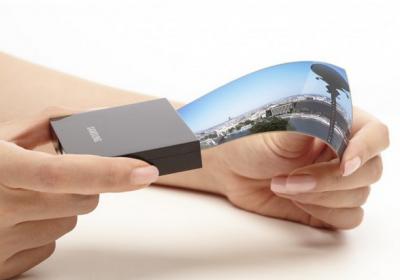In breaking the convention of flat panel displays by
replacing them with rollable, flexible, stretchable, bendable, foldable
displays, OLEDs has a major role to play. These are tiny Light Emitting Diodes
small enough to design flexible panels. Apart from making gadgets more stylish
and giving gadget freaks goose bumps; this makes them sort of more wearable.
They have been used in Samsung YOUM, and
have a world of possible applications. But a thing that has to be kept in mind
that a flexible display does not essentially mean a flexible/bendable phone.
Why? ….Simply because apart from making the screen flexible what we need to
make a phone flexible is a bendable battery which is not that easier to make.
 |
| SAMSUNG YOUM flexible display |
So candidates like LG G flex and Samsung Galaxy round exist
but they are not bendable but “bent”, i.e. they have a permanently bent
structure which makes them less prone to breaks, and provides easier handling
(God knows how they figure out that a bent phone is easier to handle!)
| LG G flex |
One more rumor surrounded that Samsung is going to release
galaxy skin which ultimately turned out to be a concept phone.
 |
| Samsung skin (that turned out to be aconcept phone!) |
The youm
flexible screen concept by Samsung can only be used to make the screen flexible
but the phone will remain stone- hard.
Therefore as long as some nanomaterials like graphene is not
extensively researched to provide a corporate model of feasibility; flexible
phones are not coming to your hands.
Coming to the point, what
makes an OLED or Organic LED small enough..?
Unlike a conventional LED which is simply a p-n junction
diode in which the wavelength emitted during recombination of hole and electron
is in the range of visibility, OLED is a stack of layers of organic polymers
which emit light when current flows through it.
It has a cathode, an anode an emissive layer, a conductive
layer and two more layers of some transparent material like glass (sometimes a
single layer of glass and other layer is of some other opaque material, if it’s
an OLED that transmits light only one way.)
These layers can be covered on surfaces and most notably can
even be printed using ink-jet printers! This promises that in future they are
going to be very economical in building the next generation of
televisions. But until now probably
owing to the lack of specialized infrastructure that is there only for LCD or
LED screens they cost a bit higher. But still OLED televisions have arrived in
the market and are possibly here to stay.
No comments:
Post a Comment